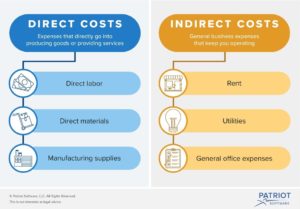As a government contractor, indirect cost pool rates may seem confusing or unnecessary. Nothing could be further from the truth! The rates are sometimes referred to as Defense Contract Audit Agency (DCAA) rates because DCAA is the agency whose purpose is to audit suppliers’ rates or Federal Acquisition Regulation (FAR) rates because they are governed in FAR Part 31. These rates actually help companies manage their business profitably and manage costs consistently. This article breaks down the basics, explains why indirect rates are important, and provides some of Scout Environmental’s tips/practices to help you as clients and partners.
1. What are indirect rates?
- Whereas direct rates are associated with direct costs of producing goods or providing services, indirect costs are associated with general
business expenses. Indirect rates separate the indirect costs into pools based on where the cost belongs.
- Applying indirect rates is a method of distributing company costs and applying them to projects in a fair and reasonable manner.
- The basic pools are:
- Fringe – accumulation of employer-paid benefits and their administration.
- Overhead – accumulation of costs related to an office(s) such as rent, utilities and maintenance.
- G&A (General & Administrative) – accumulation of costs relating to the administration of the company such as insurance, licenses, dues and business development.
- Costs such as donations, interest, alcohol, fines & penalties are “expressly unallowable” and not included in any of the pools.
- Cost pools are a uniform way to make sure all allowable costs are captured and reimbursed by the client.
2. Why are indirect rates important?
- The most important piece, in my opinion, is to know what needs to be added to an employee’s raw labor rate so the company charges the client a labor rate that will cover allowable company costs. It’s important to know if you charge a client $150 per hour that the rate will cover the costs to pay the employee, the costs associated with running the company and have some profit.
- Indirect rates are also important to allow a federal government contracting officer to see what costs are being added to the raw labor rate and to determine if these rates are within industry standards. A contracting officer can then see the indirect rates and at a glance determine if they are acceptable for their contract.
- Contracting officers can also be assured that every company is properly accumulating in the correct cost pool based on FAR Part 31 guidance. Based on standardized guidance, all companies will have the same costs in the same pool making the calculations fair and equal.
- All federal government contractors are required to properly calculate rates and provide the buildup (or backup) for auditing at any time. If the indirect rate calculation is built in and part of a company’s everyday business practices, they are then easily defendable when audited or questioned through the proposal/award process.
3. What is the difference between actual and provisional rates, and why does it matter?
-
- All companies are required to have provisional rates for each fiscal year.
- The rates are developed from that year’s budget.
- Provisional rates are used to load labor rates for work during the upcoming year.
- Actual rates are calculated on the actual cost the company incurs.
- Actual rates are used to “true up” the costs monthly or annually to determine the actual costs of projects.
- For time and materials (also referred to as T&M) and cost plus fixed fee (also referred to as CPFF) projects, the rates will be “trued up” to actual and additional amounts billed (if higher than the provisional rates) or reimbursed to the client (if lower than the provisional rates) through the “Incurred Cost Submittal” process each year.
Small businesses should be sure to incorporate the rate development within their accounting structure. Doing so will reduce the risk with any proposal or award if rates are audited. It is better to be prepared and have the ability to easily defend your company’s rates than scramble to put together a FAR requirement after the fact. Comprehensive preparation should be done regardless so that final rates match what was proposed. The best advice is to have a professional who is well versed in rate development to educate, guide and help with implementation. It is a one-time investment in your business that can greatly avoid problems later on.
Scout Environmental is confident that our rate development and accounting practices meet DCAA requirements making Scout a trusted partner for both clients and partners.
Contact us today with any questions: hello@scoutenv.com.



 business expenses. Indirect rates separate the indirect costs into pools based on where the cost belongs.
business expenses. Indirect rates separate the indirect costs into pools based on where the cost belongs.









